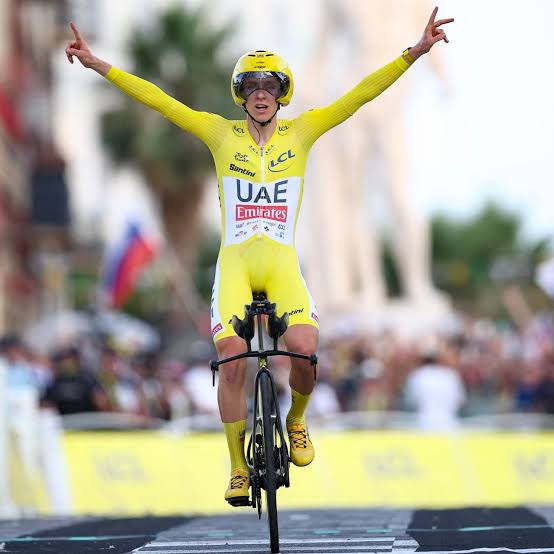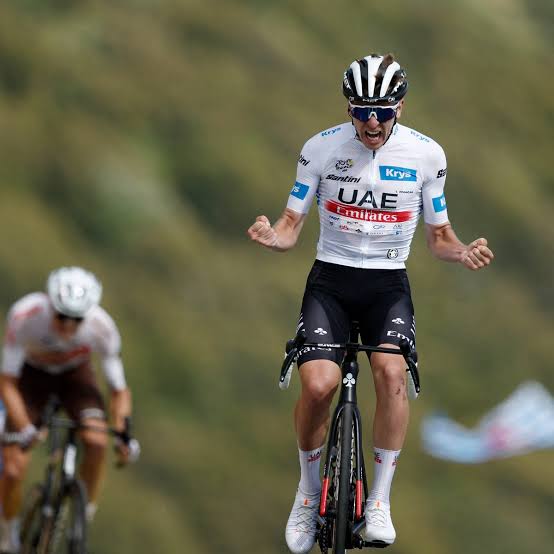
Breaking News: Is Tadej Pogačar the greatest cyclist who’s ever lived? Plus we ask: What’s going on with cycling media in 2024?….

Pogačar’s case for greatness is certainly building, but longevity and adaptability are key. He’s dominating in an era of stiff competition, particularly from Jonas Vingegaard and Remco Evenepoel, and how he evolves through injuries, team dynamics, and aging will define his legacy. To be “the greatest,” Pogačar will need more than Tour victories; he’ll need to redefine the boundaries of what a cyclist can achieve over time, much like Merckx did.
Meanwhile, in 2024, cycling media finds itself at a crossroads. The sport’s increasing globalization, and the rise of streaming platforms and social media, have shifted how cycling is covered. Media outlets are diversifying their content to appeal to new markets, particularly in North America and Asia. However, this has resulted in some tensions. Traditional European outlets are losing influence, and a more fragmented landscape is emerging, with specialized websites and independent journalists gaining ground. Moreover, controversies over performance-enhancing technologies and rider health are pushing journalists to probe deeper into issues previously sidelined, like the use of carbon monoxide rebreathers or advancements in recovery protocols. Cycling media in 2024 reflects the evolving nature of the sport itself, both in terms of competition and coverage.
You may also like
Related
Archives
Categories
- 2024 Australian Open
- 49
- 49ERS
- 49ers vs Lions
- 49ers vs. Chiefs
- 69ERS
- AFL
- AFLW
- American Football
- anonymous
- Arsenal
- Aston Villa
- AUSX 2024
- AUSX OPEN
- Baltimore Ravens
- Baseball
- Basketball
- Billionaires
- blog
- Books
- Boston Celtics
- Boxing
- Brisbane Bronco
- Buffalo Bills
- Canadian Football league
- Car Racing
- Caroline Panthers
- Celtics
- Championship
- Chelsea
- Chess
- Crystal Palace
- Cycling
- Dallas Cowboys
- Dallas Mavericks
- Dirt bike
- Djokovic
- Dodgers
- Dortmund
- Essendon Bombers
- Florida gators
- Football
- Fremantle Dockers
- Fullham
- general
- German Masters
- Giants pride
- Golden State Warriors
- Golf
- Hockey
- Houston Texans
- Indiana Fever
- Indiana Pacers
- Ipswich
- Ipswich Town
- Kansas city chiefs
- KYLE LARSON
- Lakers
- Larry bird
- LIFE STYLE
- LIFESTYLE
- Liverpool
- Los Angeles Dodgers
- Los Angeles Rams
- Mallas Cowboys
- Manchester city
- Manchester United
- Michealan Wolverines
- Michigan wolverine
- Michigan Wolverines
- Milwaukee brewers
- MLB
- MLB Aaron judge
- Motocross
- MotoGP
- Motorcross
- Music
- MXGP
- NASCAR
- NBA
- New England Patriots
- New Orleans pelicans
- Newcastle United
- NFC Championship
- NFL
- NFL Trade
- NHL
- Nottingham Forest
- Oil and Gas
- Olympic
- other
- Other Sports
- OU Softball
- PGA
- Philadelphia Eagles
- Philadelphia Flyers
- Philadelphia Phillies
- Pittsburgh Steelers
- Playoffs
- Racing
- Ravens smith
- Real Madrid
- Rugby
- San Francisco Fiants
- San Francisco Giants
- SEAL Team
- sevila
- Snooker
- Snooker Masters
- Sports
- St. Louis Cardinals
- Super Bowl LVIII
- Superbowl
- Supercross
- Ted Lasso
- Tennis
- TONY STEWART
- Toronto Raptors
- Tottenham Hotspur
- Tour de France
- Transfer News
- Uncategorized
- Video Games
- West ham
- Winnipeg Blue Bombers
- Wrexham
- WWE
Leave a Reply